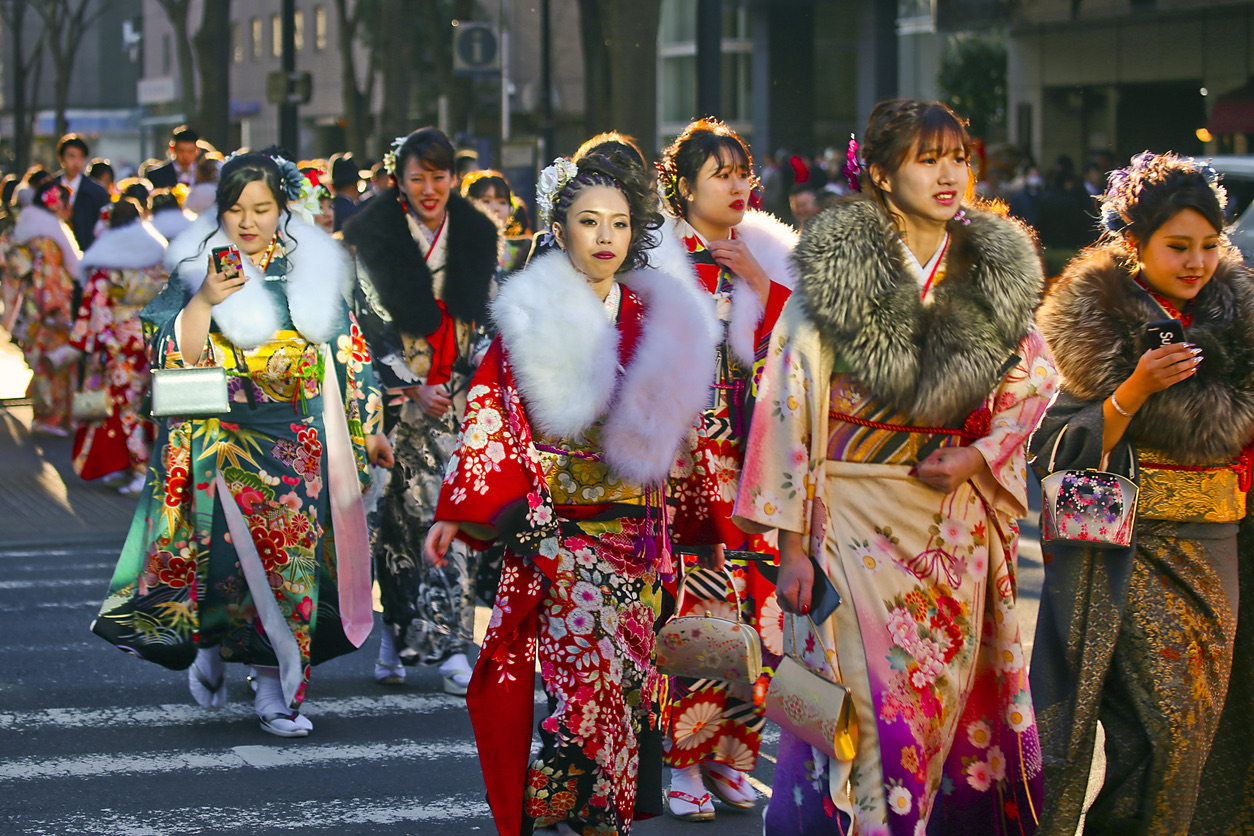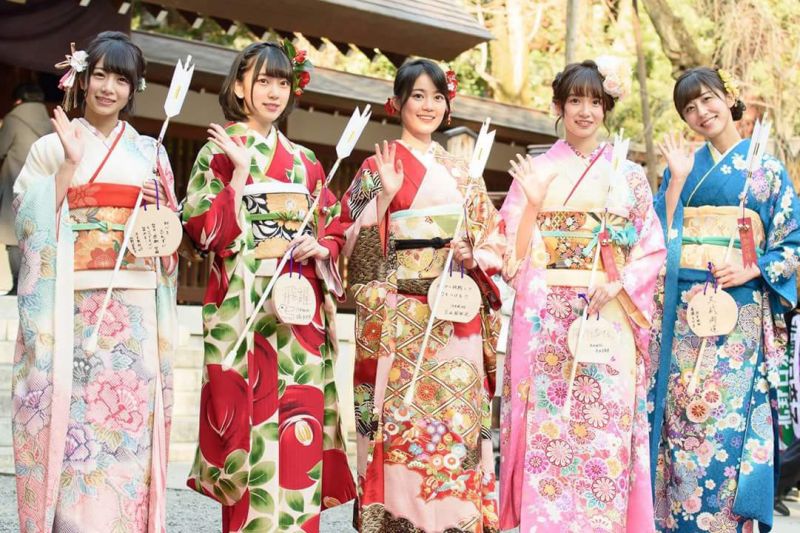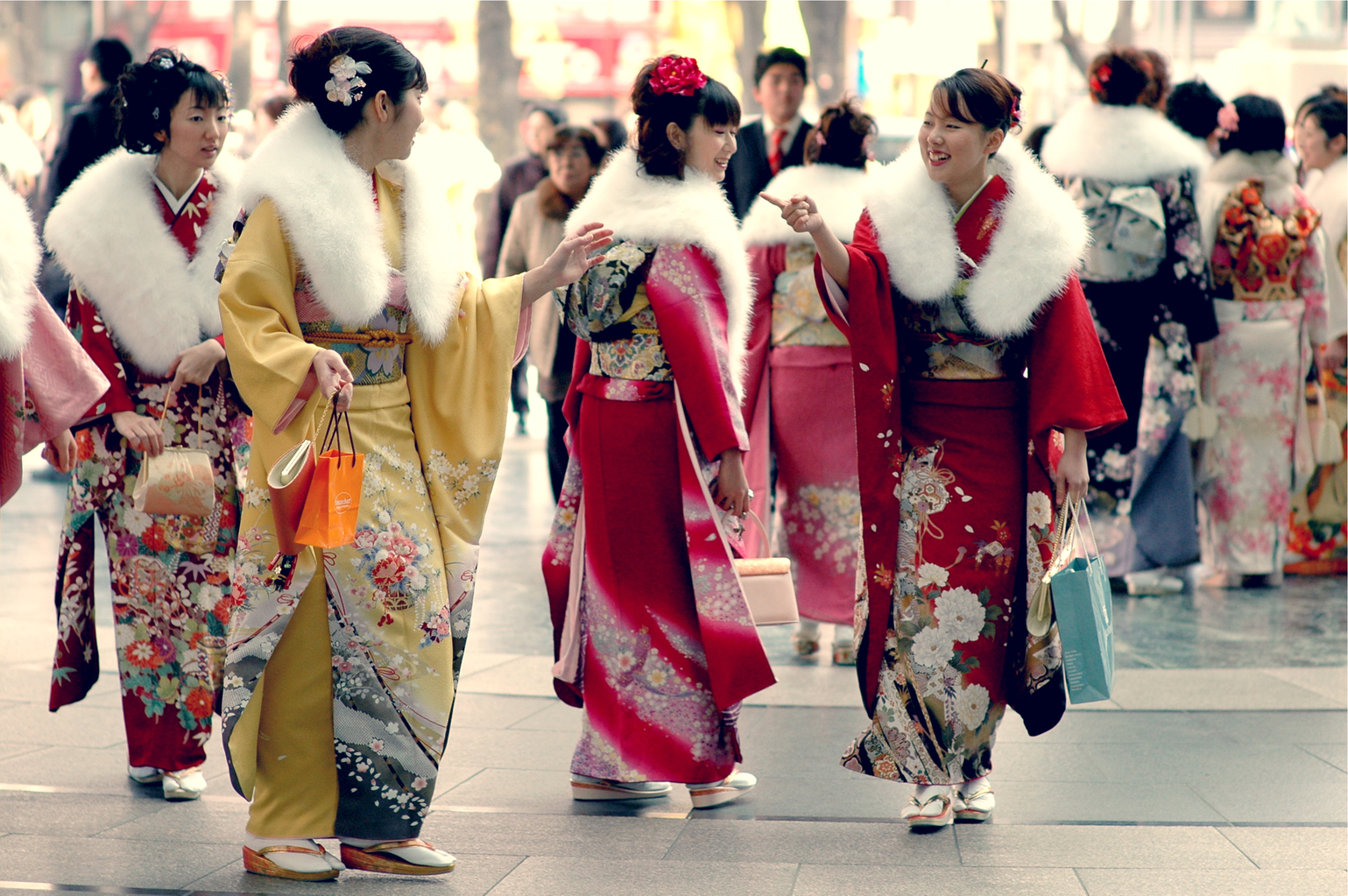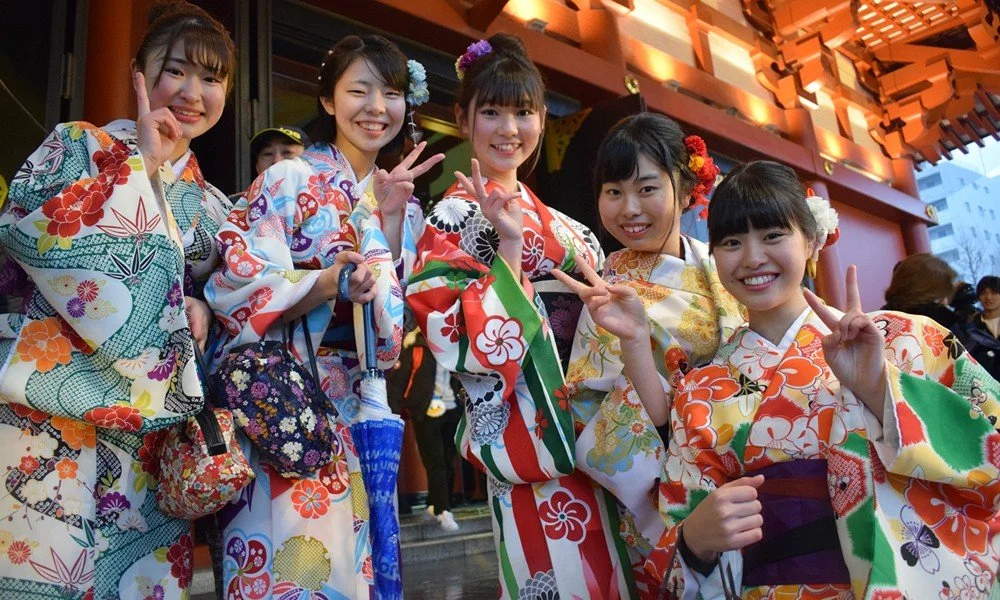Seijin no Hi: Celebrating Japan’s Coming of Age Day – A Tradition Steeped in Culture and Significance
Seijin no Hi is one of the most anticipated national holidays in Japan. Often associated with young people transitioning into adulthood, this day marks a significant rite of passage and reflects the rich cultural heritage of the country. In this article, we will explore the meaning, history, and celebrations of Seijin no Hi, or Coming of Age Day, a holiday that is deeply embedded in Japan’s societal fabric. Join Yoshida Hotel as we delve into the customs, traditions, and special activities that surround this important day in Japan.
What Is Seijin no Hi (成人の日)?
Seijin no Hi, which translates to “Coming of Age Day,” is a holiday in Japan dedicated to celebrating the young adults who have reached the age of 20, the legal age of adulthood in Japan. This age symbolizes maturity and responsibility, where young people are recognized as adults who can now legally vote, drink alcohol, and engage in other adult activities. The event usually takes place on the second Monday of January each year.

In Japan, this holiday is not just about legal adulthood; it’s about acknowledging the personal growth and new responsibilities that come with adulthood. The day is filled with ceremonies, family gatherings, and social events, all aimed at marking this important transition.
A Deep Dive Into the History of Seijin no Hi
The Origins of Seijin no Hi
The origins of Seijin no Hi can be traced back to ancient Japan, where it was customary for people to celebrate their transition into adulthood through various rites of passage. The modern version of Seijin no Hi, however, began after World War II. It was officially established in 1948 by the Japanese government to offer a formalized ceremony to young people turning 20.
The holiday’s modern-day celebrations focus on empowering young adults and offering them an opportunity to reflect on the responsibilities and opportunities that come with adulthood. Traditionally, ceremonies were held at local city halls and community centers, but nowadays, they are often celebrated at larger events such as public ceremonies and private gatherings.

The Significance of Age 20 in Japan
In Japan, age 20 is seen as the threshold of adulthood. This is the age when individuals are considered capable of making important life decisions, taking on responsibilities, and contributing meaningfully to society. While other cultures may have different coming-of-age milestones, in Japan, Seijin no Hi provides a significant, culturally recognized moment for young adults to embrace their roles as responsible citizens.
The Ceremony of Seijin no Hi: A Formal Celebration of Adulthood
What Happens During the Seijin no Hi Ceremony?
On Seijin no Hi, young people, particularly women, often wear traditional attire such as the kimono. The ceremony is typically held at the local government office or a community hall, where young adults gather for speeches and formal greetings. These ceremonies serve as a reminder of the significance of adulthood and are attended by family members and friends who come to support and celebrate.

For many young people, this event is a chance to reconnect with old friends and reflect on the years that have passed since high school graduation. It’s a moment to feel proud of their achievements and acknowledge the responsibilities they are now expected to undertake.
The Role of Family and Community in the Celebration
In Japan, family plays a significant role in Seijin no Hi. It is common for parents to attend the ceremony with their children, offering support and expressing pride in their accomplishments. Afterward, families often celebrate together with a meal at home or in a restaurant, marking the day with warmth, reflection, and togetherness.
What Do Young Adults Wear on Seijin no Hi?
On Seijin no Hi, many young women wear the “furisode,” a type of kimono with long sleeves that is worn by unmarried women. The vibrant colors and intricate patterns are a symbol of youth and celebration. Men typically wear hakama, a traditional outfit consisting of wide-legged trousers, along with a formal jacket and haori. The attire represents the formality of the event and the transition into adulthood.

The act of dressing up in traditional clothing is an important part of Seijin no Hi, as it symbolizes respect for tradition and the seriousness of the transition. Many young people also have professional photos taken to commemorate the day, which they may keep as mementos for years to come.
Seijin no Hi Celebrations Across Japan: A National Celebration
Seijin no Hi in Tokyo
In Tokyo, Seijin no Hi celebrations are especially grand, with city-wide ceremonies and events. Many young adults gather at large venues, where officials and local celebrities give speeches encouraging them to embrace their responsibilities. A major event takes place at the Meiji Shrine, a popular spot for New Year’s celebrations, where young adults dressed in furisode and hakama come to pay respects to the gods.

Tokyo’s vibrant celebrations are also accompanied by parties and gatherings that highlight the social aspect of Seijin no Hi. It’s a time for young people to reconnect with their peers and reflect on their past while looking forward to their future.
Seijin no Hi in Kyoto
Kyoto, known for its rich cultural heritage, offers a more traditional and serene environment for Seijin no Hi celebrations. Young people in Kyoto often participate in quiet, reflective ceremonies, where they are reminded of the historical significance of the day. The ancient temples and shrines provide a beautiful backdrop for these celebrations.
Seijin no Hi in Smaller Cities
In smaller cities and towns, Seijin no Hi takes on a more personal tone. Local governments may organize smaller-scale ceremonies, and many young adults celebrate with their families in intimate settings. These gatherings may include traditional Japanese games, family meals, and even visits to local shrines for blessings.

Seijin no Hi and the Changing Role of Youth in Japan
The Modern-Day Relevance of Seijin no Hi
As Japan evolves, so too does the significance of Seijin no Hi. While the traditional elements of the holiday remain, there is a growing recognition of the changing role of youth in society. With advancements in technology and shifts in social norms, today’s young adults face different challenges and opportunities compared to those of previous generations.
Seijin no Hi has adapted to reflect the changing values of the younger generation, including an increased emphasis on personal development, education, and career advancement. As young people become more globally connected, Seijin no Hi has become a moment to reflect not just on local responsibilities, but on a broader sense of identity and purpose.

The Impact of Seijin no Hi on Japanese Culture
Seijin no Hi is a reminder of the deep-rooted cultural values in Japan, such as respect for tradition, the importance of community, and the recognition of personal responsibility. It is a celebration that transcends age, gender, and region, offering a moment of unity across the nation.
In the fast-paced world of modern Japan, Seijin no Hi provides a rare opportunity for the entire country to pause, reflect, and celebrate the next generation.
Top Hotels in Japan for Seijin no Hi Celebrations
If you are planning to experience Seijin no Hi in Japan, there are numerous hotels that offer luxury accommodations and excellent services to help make your stay special. Whether you’re attending a ceremony in Kyoto or enjoying a quiet retreat in the countryside, Japan has a wide range of hotels that cater to all your needs.
The Hotel Seiryu Kyoto Kiyomizu
Address: 2 Chome-204-2 Kiyomizu, Higashiyama Ward, Kyoto, 605-0862, Japan
Phone: +81 75-532-1111
This elegant hotel in the heart of Kyoto offers guests a chance to stay in style while exploring the city’s cultural heritage. Known for its stunning views of the Kiyomizu Temple, the Hotel Seiryu Kyoto Kiyomizu is an excellent choice for those seeking a luxurious and traditional experience during Seijin no Hi.

The Gate Hotel Kyoto Takasegawa by Hulic
Address: 〒604-8023 Kyoto, Nakagyo Ward, Bizenjimacho, 310-2 立誠ガーデン ヒューリック京都 8F
Phone: +81 75-256-8955
For a contemporary and sophisticated stay, The Gate Hotel Kyoto Takasegawa offers an ideal setting. Located near the Takase River, it blends modern comforts with a historic ambiance, making it a great choice for Seijin no Hi celebrations.

HOTEL MASTAY Jingumichi
Address: 159 Ebisucho, Higashiyama Ward, Kyoto, 605-0033, Japan
Phone: +81 75-771-8822
Nestled in a traditional part of Kyoto, HOTEL MASTAY Jingumichi offers a unique fusion of modern amenities and cultural charm. Perfect for those looking to experience Seijin no Hi in an authentic, yet comfortable, setting.

Kyoto Brighton Hotel
Address: 330 Shiteicho, Kamigyo Ward, Kyoto, 602-8071, Japan
Phone: +81 75-441-4411
A luxurious hotel offering refined elegance, Kyoto Brighton Hotel is perfect for those who want to experience Seijin no Hi in a peaceful and beautiful environment. Its proximity to Kyoto’s historic sites makes it an ideal location for exploring the city’s heritage during the holiday.

Conclusion: Embracing Adulthood with Seijin no Hi
Seijin no Hi is more than just a holiday; it is a powerful reminder of Japan’s rich cultural traditions and the significance of adulthood. Whether you are a local or a visitor, experiencing this day in Japan provides a unique opportunity to reflect on the values of maturity, responsibility, and growth.
At Yoshida Hotel, we hope this article has offered you valuable insights into Seijin no Hi. From the traditional ceremonies to the modern celebrations, the holiday continues to be a crucial part of Japanese culture. Embrace the spirit of Seijin no Hi and celebrate adulthood with pride, wherever you are in Japan.
Details
Namistay chain hotel
- 61-63 Hoang Ke Viem, Bac My Phu, Ngu Hanh Son, Da Nang, Vietnam
- Hotline: 0905 432 992
- Lot 45 An Thuong 29, Bac My Phu, Ngu Hanh Son, Da Nang, Vietnam
- Hotline: 0977 455 546
- 42 An Thuong 26 Street, Bac My Phu, Ngu Hanh Son, Da Nang, Vietnam
- Hotline: 0965 442 842

